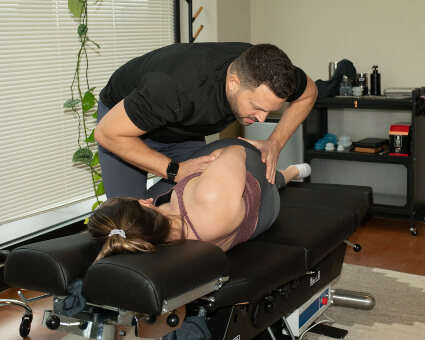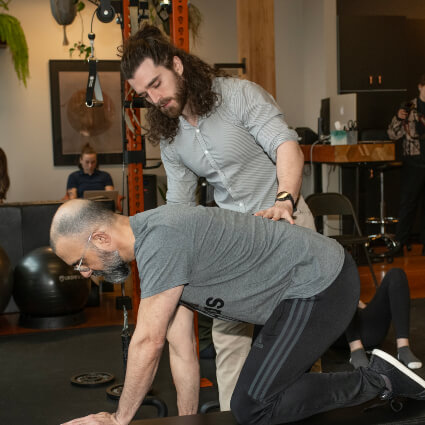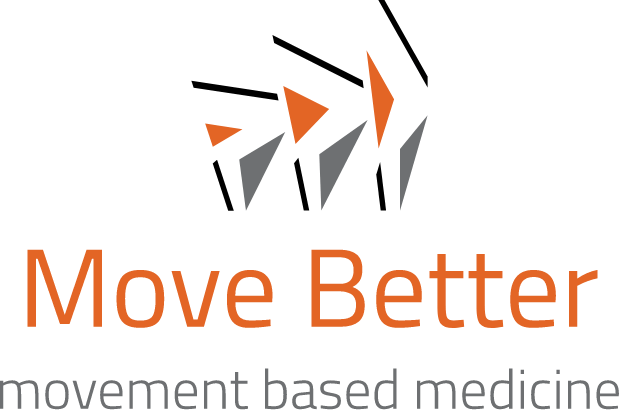Low Back Pain Relief in Portland
Our Approach
 Understanding the individual in front us is a crucial step when trying to evaluate chronic pain. Where have you been, what do you like to do, what are your goals? In the absence of the need for urgent intervention, it is common that people will experience pain that has plagued them for far too long. First, we must ask ourselves and our patients, why does this person have low back pain in the first place? Our dynamic approach boils down to being empathetic practitioners who listen and offer patients a new way to view what they are experiencing. We support our patients in all aspects of their life, not only their low back pain.
Understanding the individual in front us is a crucial step when trying to evaluate chronic pain. Where have you been, what do you like to do, what are your goals? In the absence of the need for urgent intervention, it is common that people will experience pain that has plagued them for far too long. First, we must ask ourselves and our patients, why does this person have low back pain in the first place? Our dynamic approach boils down to being empathetic practitioners who listen and offer patients a new way to view what they are experiencing. We support our patients in all aspects of their life, not only their low back pain.
At Move Better, we evaluate all of our patients using the Movement Paradigm Evaluation which was developed in-house, and provides us with a copious amount of information about how you move. This allows us to assess how our patients organize themselves through movement and draw correlations to what you experience in your low back. Oftentimes, the correlations that we draw upon from evaluating your movement will dictate how we treat you moving forward. Whether that is the exercises we chose, soft tissue work we conduct, or the refined adjustment technique and motions we want to promote in our patients.
There are instances in which a multidisciplinary approach and/or further assessment may be required for our patients. In these instances, we will rely on our vast network of other practitioners and providers to meet the needs of the patient in front of us. Move Better offers acupuncture and massage therapy on site, and is an invaluable resource to our patients. On top of this, we have made a concentrated effort to build relationships with other healthcare professionals that include MDs, imaging centers, naturopaths, massage therapists and other disciplines that personally align with our values. We understand there is a limit to our knowledge, and having a multidimensional approach ensures that you receive the care you need and most importantly deserve.
The Triple Threat
- Breathe: You can breathe in a way that allows the muscles in your low back to relax. A skill we call diaphragmatic breathing is the inverse to what most people do naturally, which is apical breathing pattern. Patients that use their back constantly when moving will have increased tension in this area, and coaching our patients how to breathe in a way that reduces that tension and reduces their low back pain.
- Brace: You can stabilize your body with midline stability using your breath and supportive muscles, rather than rely on the structures in your low back. This skill allows you to spare these low back structures from unnecessary load and recruit other muscles to do the work, reducing many of the common causes of low back pain and low back injury.
- Hinge: We teach you to effectively organize your entire body to complete the task of performing common life tasks like sitting, walking, and lifting objects from the floor. We teach you to do these movements while keeping your spine in a stable position that does not allow irritation of your low back. The skill of hinging allows you to organize your body to use the large and efficient muscles that surround your hips rather than use the musculature in your back.

A Common Cause
A common cause of low back pain is the result of chronic overuse of the structures surrounding the low back and lack of use of the structures that surrounds the hip such as our glutes, hip flexors, hamstrings etc. Over time, this places excessive load on the tissues in our back, and can lead to structural damage and hypersensitivity to neurological pain signalling.
One of the reasons why this intervention is so effective, is because the theory behind “use hips, not low back” can be applied to any of the potential structures that may be getting irritated in the low back region. When we determine what is causing your pain, the treatment goal becomes how to functionally move without loading the structures that hurt. When we change the template of how you move your body in space, we are able to more favorably distribute load across the body and significantly reduce the likelihood of injuries and overall pain.
The body often chooses the path of least resistance. Just like swinging a golf club, these skills take time, practice, and effort to train and become proficient in. At the point of proficiency, the body will be able to choose the template of motion that doesn’t hurt or put excessive load on the things that cause pain. What we need to do is offer an alternative option for the body. Much like our patients who are blinded to these potential alternatives, so is our neurophysiology. But one thing our patients and our neurophysiology are capable of is learning and adapting. Our role as clinicians is to be the conduit for that change. Move Better believes that there is always another option.
A Variety of Techniques
Incorporating a variety of therapeutic modalities into the management of low back pain greatly complements our movement-based medicine approach. There are many different interventions that we utilize in our clinic such as instrument assisted soft tissue manipulation (IASTM, cupping, graston, etc.), muscle energy technique (MET), ischemic compression, Body Tempering, and spinal manipulative therapy (SMT). These interventions are purposefully chosen based on what our working diagnosis is, and your comfort.
Creating Change
At Move Better, we recognize that the journey to alleviating low back pain is unique to you, and a personalized, compassionate approach is essential for long-term success. While our treatment methods are grounded in movement-based principles, we also value the importance of a multidisciplinary approach and passive care modalities to complement our rehabilitation strategies. Ultimately, our goal is to empower you with the tools and knowledge to reshape your movement patterns, reduce your pain, and improve your quality of life.
With patience, consistency, and the right support, change is not only possible, but inevitable.

